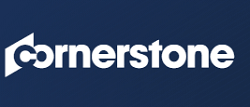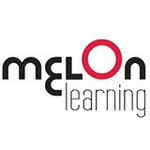Description

Pathwright

Cornerstone Learning
Comprehensive Overview: Pathwright vs Cornerstone Learning
Pathwright
a) Primary Functions and Target Markets:
- Primary Functions:
- Pathwright is primarily a course creation and learning management platform. It offers tools for designing, teaching, and managing online courses. Features include course builder, interactive content, assessments, and student progress tracking.
- Target Markets:
- Pathwright is mainly targeted towards educators, trainers, schools, businesses, and content creators who are looking to create online courses. It serves small to mid-sized organizations and individual entrepreneurs.
b) Market Share and User Base:
- Pathwright tends to have a smaller user base compared to larger, more established LMS platforms, as it caters primarily to specialized markets such as educators and small to medium enterprises. Its market share is modest, focusing on niche needs in course design and personal learning experiences.
c) Key Differentiating Factors:
- Ease of Use: Known for its intuitive user interface, making it accessible for users without technical expertise.
- Customizability: Pathwright allows significant customization in course creation, enabling tailored educational experiences.
- Community and Support: It has a strong community aspect, facilitating connection between educators and learners.
Cornerstone Learning
a) Primary Functions and Target Markets:
- Primary Functions:
- Cornerstone Learning is a robust, end-to-end talent management platform with a comprehensive Learning Management System (LMS). It includes features like employee training, development tracking, performance management, and e-learning content management.
- Target Markets:
- It targets large enterprises and diverse industries, mainly focusing on corporate HR departments and learning and development sectors interested in comprehensive training solutions.
b) Market Share and User Base:
- Cornerstone on Demand holds a significant share in the enterprise LMS market with a vast user base. It serves numerous Fortune 500 companies and has a global reach, being one of the key players in this sector.
c) Key Differentiating Factors:
- Comprehensive Features: Offers extensive modules for talent management and HR processes beyond just learning, including recruitment and performance management.
- Scalability: Can be scaled to meet the demands of large enterprises with extensive global operations.
- Integration Capabilities: Strong integration with other enterprise systems and software, supporting complex organizational needs.
Learning Suite 360
a) Primary Functions and Target Markets:
- Primary Functions:
- Learning Suite 360 combines features for creating, delivering, and managing online teaching and training programs. It offers LMS functionalities and integrates advanced analytics for tracking learner progress and optimizing content delivery.
- Target Markets:
- Designed for educational institutions, corporate training environments, and e-learning providers, aiming at both small and large scale implementations.
b) Market Share and User Base:
- Learning Suite 360 is generally recognized as a flexible option for institutions that require a comprehensive yet adaptable LMS solution. While it may not have the same extensive user base as top-tier competitors like Cornerstone, it is well-regarded in educational settings for its versatility and functionality.
c) Key Differentiating Factors:
- Flexibility: Known for its ability to adapt to various learning environments, be it formal education or corporate training.
- Analytics and Reporting: Offers robust tools for in-depth analytics, giving insights into learner behavior and content effectiveness.
- User Experience: Designed with attention to user experience for both learners and administrators, with a focus on efficient operation and engagement.
Comparison Summary:
- Market Position: Cornerstone Learning leads in market share and is geared towards large enterprises, while Pathwright and Learning Suite 360 cater more towards niche markets and flexible learning needs.
- Features and Integration: Cornerstone offers a comprehensive suite of HR and talent management tools, whereas Pathwright focuses on course creation and engagement. Learning Suite 360 offers strong analytics and adaptability.
- User Interface and Experience: Pathwright stands out for ease of use and community learning, Cornerstone for scalability and enterprise integration, and Learning Suite 360 for flexible and analytical prowess.
Contact Info

Year founded :
2012
+1 864-990-2065
Not Available
United States
http://www.linkedin.com/company/pathwright

Year founded :
Not Available
Not Available
Not Available
United States
http://www.linkedin.com/company/cornerstonelearning
Feature Similarity Breakdown: Pathwright, Cornerstone Learning
When comparing learning management systems (LMS) like Pathwright, Cornerstone Learning, and Learning Suite 360, it’s helpful to examine their commonalities and differences in terms of core features, user interfaces, and unique functionalities. Here’s a breakdown based on these aspects:
a) Core Features in Common
-
Course Management:
- All three platforms provide comprehensive tools for creating, managing, and delivering courses online. This includes multimedia content support (video, audio, documents), quizzes, and assessments.
-
Engagement Tools:
- They all offer various engagement features, such as discussion boards, forums, and messaging systems to facilitate communication and interaction between learners and instructors.
-
Analytics and Reporting:
- Integrated analytics and reporting tools are available in each, enabling administrators and instructors to track learner progress, course completion rates, and other important metrics.
-
Integration Capabilities:
- Each platform supports integration with third-party tools, such as HR systems, CRM, and other educational technologies, to enhance functionality and connectivity.
-
Custom Branding:
- These systems allow organizations to customize the branding of their learning environments to align with company identity.
-
Mobile Access:
- Mobile-friendly interfaces or dedicated mobile applications are provided, allowing learners to access content on the go.
b) Comparison of User Interfaces
-
Pathwright:
- Known for its intuitive and visually appealing interface, Pathwright emphasizes ease of use with a clean design. It uses a “path” metaphor for course navigation, which guides users step-by-step through the learning process.
-
Cornerstone Learning:
- The interface of Cornerstone Learning is robust and customizable, offering a balance between functionality and user experience. It tends to be feature-rich, with a dashboard that can be personalized to user preferences.
-
Learning Suite 360:
- Similarly, Learning Suite 360 offers a user-friendly interface that focuses on simplicity and efficiency. It often emphasizes quick navigation and accessibility, providing a streamlined learning experience.
c) Unique Features
-
Pathwright:
- Pathwright is distinct in its learning path design, where each course is structured like a pathway. This design encourages self-paced learning and progress tracking.
- Offers a unique "Teach" feature that allows collaboration between instructors to co-create and co-teach courses.
-
Cornerstone Learning:
- Cornerstone is known for its extensive talent management functionalities, beyond standard LMS features. This includes performance tracking and career pathing, making it suitable for organizational development.
- It offers advanced AI-driven recommendations for personalized learning experiences and development planning.
-
Learning Suite 360:
- Known for tight integration with other learning solutions offered by the same provider (e.g., 360Learning), allowing seamless transfer and management of learning content across platforms.
- Emphasizes collaborative learning with peer reviews and group learning projects as a central part of its ecosystem.
Each of these platforms offers a robust set of core features suitable for different learning environments, with unique strengths that can cater to specific organizational needs. The choice would depend on whether you prioritize a visually guided interface, integrated talent management, or collaborative learning features.
Features

Interactive Learning Experience
Customization and Branding
Integration and Support
Course Creation and Management
Analytics and Reporting

Course Management
Performance Tracking
User Experience
Best Fit Use Cases: Pathwright, Cornerstone Learning
When selecting the most appropriate Learning Management System (LMS) for your business or project, it's important to consider the specific strengths and ideal use cases for each option. Here's a breakdown of Pathwright, Cornerstone Learning, and Learning Suite 360:
a) Pathwright
Best Fit Use Cases:
- Small to Medium-sized Businesses and Educational Institutions: Pathwright is well-suited for smaller organizations that need an easy-to-use platform to create, distribute, and manage course content.
- Creative and Design-focused Industries: Its intuitive and aesthetically pleasing interface is ideal for businesses in creative fields such as design, art, and personal development.
- Customer Education and Onboarding Programs: Businesses that need to create customer education content or onboarding modules for their products or services can leverage Pathwright’s streamlined course creation tools.
Strengths:
- Ease of Use: Pathwright offers a user-friendly interface that simplifies course creation and management, making it accessible for users who may not have extensive technical expertise.
- Customizable Learning Paths: Pathwright allows instructors to design unique learning paths that can be tailored to the needs of each learner or cohort.
b) Cornerstone Learning
Best Fit Use Cases:
- Enterprise-Level Organizations: Cornerstone Learning is a robust and scalable solution that caters well to large enterprises needing a comprehensive LMS with extensive features.
- Highly Regulated Industries: Industries such as healthcare, finance, and manufacturing, where regulatory compliance and standardized training are essential, will benefit from Cornerstone’s robust reporting and compliance tracking features.
- Employee Development and Performance Management: Organizations focused on employee growth and performance management can leverage Cornerstone’s talent management suite.
Strengths:
- Comprehensive Feature Set: Offers a wide range of features, including skills tracking, performance assessments, and content authoring tools, supporting extensive training programs.
- Integration Capabilities: Easily integrates with other enterprise tools and HR systems, providing a seamless experience for organizations with existing infrastructure.
c) Learning Suite 360
Best Fit Use Cases:
- Mid to Large-Sized Enterprises: Companies that require a scalable solution with flexibility in learning management.
- Technology and Software-focused Companies: Organizations in fast-paced industries like tech, which require agile learning solutions to keep pace with rapid industry changes.
- Global Companies: Businesses operating on a global scale can leverage its multilingual support and cross-border compliance features.
Strengths:
- Integrated Systems: Combines course management with assessments, analytics, and collaboration tools, offering a holistic learning experience.
- Customization and Adaptability: Provides robust customization options that allow businesses to tailor the platform to specific needs and workflows.
d) Industry Verticals and Company Sizes
- Pathwright caters primarily to smaller companies, education startups, and organizations in the creative sectors that prioritize simplicity and creativity in their learning solutions.
- Cornerstone Learning serves large enterprises across various industries, particularly those needing strong regulatory compliance features, such as healthcare and finance, and those heavily investing in talent development.
- Learning Suite 360 is ideal for mid to large-sized organizations in industries like technology, software, and global enterprises that require comprehensive learning and development solutions with a strong emphasis on integration and adaptability.
Ultimately, the decision between these platforms should be based on the specific needs, budget, and strategic goals of your organization or project.
Pricing

Pricing Not Available

Pricing Not Available
Metrics History
Metrics History
Comparing teamSize across companies
Conclusion & Final Verdict: Pathwright vs Cornerstone Learning
When comparing Pathwright, Cornerstone Learning, and Learning Suite 360, it's important to assess each platform based on various factors such as cost, usability, features, scalability, and support. Here's a breakdown that aims to help potential users make an informed decision:
Conclusion and Final Verdict
a) Best Overall Value
Considering all factors, Cornerstone Learning tends to offer the best overall value for businesses looking for a comprehensive and scalable learning management system. Its extensive feature set, along with robust analytics and customization options, makes it suitable for organizations of various sizes.
b) Pros and Cons
Pathwright
-
Pros:
- User-friendly interface, particularly suitable for educators and small to medium-sized education providers.
- Flexible course design with a strong focus on interactive and engaging learning experiences.
- Cost-effective for smaller organizations with straightforward needs.
-
Cons:
- Limited enterprise-level features and scalability options.
- Fewer integrations compared to more robust platforms like Cornerstone.
- May not provide as many analytical tools and insights as needed for larger organizations.
Cornerstone Learning
-
Pros:
- Comprehensive feature set with powerful analytics and reporting capabilities.
- Highly scalable, making it a good fit for medium to large enterprises.
- Extensive integration options with other business systems.
-
Cons:
- Can be costly, particularly for smaller organizations or those with limited budgets.
- The steep learning curve for new users due to the broad range of features.
- Implementation and customization can be time-consuming.
Learning Suite 360
-
Pros:
- Offers a holistic solution with 360-degree learning capabilities across multiple learning modalities.
- Strong support for blended learning and a variety of content delivery methods.
- Flexible and customizable to cater to specific organizational needs.
-
Cons:
- May have redundant features for those who need focused, specific functionality.
- User interface might not be as intuitive for all users at first.
- Potentially overfeatured for small organizations that do not need extensive capabilities.
c) Recommendations
-
For Small to Mid-sized Educational Organizations: Pathwright is ideal due to its affordability and user-centric design that emphasizes effective teaching methodologies.
-
For Mid to Large Enterprises: Cornerstone Learning is a smart choice because of its scalability, robust feature set, and integration capabilities, which can support a broader range of business needs and employee training programs.
-
For Organizations Focused on Comprehensive Learning Solutions: Learning Suite 360 is particularly beneficial for groups that require diverse learning methodologies and extensive customization options.
Ultimately, the choice between these platforms should be guided by the specific needs of your organization, including budget constraints, the complexity of learning programs, and desired integration capacities. Consider a thorough assessment of each platform's features in the context of your organization's long-term goals and requirements.
Add to compare
Add similar companies




